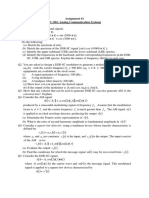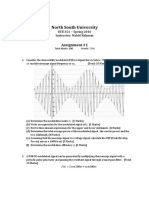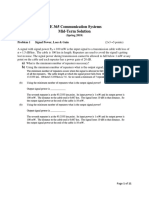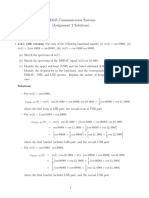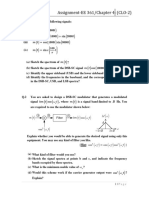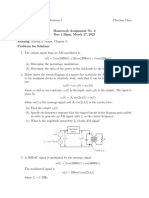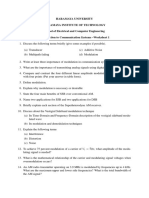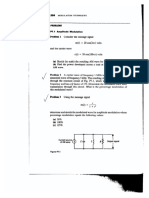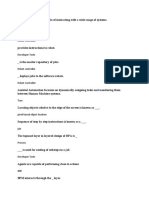0% found this document useful (0 votes)
102 views2 pagesAC Assignment2
This document contains an assignment on analog communication techniques. It includes 8 questions covering topics like amplitude modulation, spectrum analysis, modulation using nonlinear devices, double sideband suppressed carrier modulation, envelope detection, single sideband modulation, and the effects of carrier frequency offset and phase noise in quadrature amplitude modulation receivers. The document provides signal expressions, circuit diagrams and asks the reader to analyze spectra, determine modulation indices, and derive receiver output expressions for various modulation schemes.
Uploaded by
Vedant KumarCopyright
© © All Rights Reserved
We take content rights seriously. If you suspect this is your content, claim it here.
Available Formats
Download as PDF, TXT or read online on Scribd
0% found this document useful (0 votes)
102 views2 pagesAC Assignment2
This document contains an assignment on analog communication techniques. It includes 8 questions covering topics like amplitude modulation, spectrum analysis, modulation using nonlinear devices, double sideband suppressed carrier modulation, envelope detection, single sideband modulation, and the effects of carrier frequency offset and phase noise in quadrature amplitude modulation receivers. The document provides signal expressions, circuit diagrams and asks the reader to analyze spectra, determine modulation indices, and derive receiver output expressions for various modulation schemes.
Uploaded by
Vedant KumarCopyright
© © All Rights Reserved
We take content rights seriously. If you suspect this is your content, claim it here.
Available Formats
Download as PDF, TXT or read online on Scribd
/ 2


